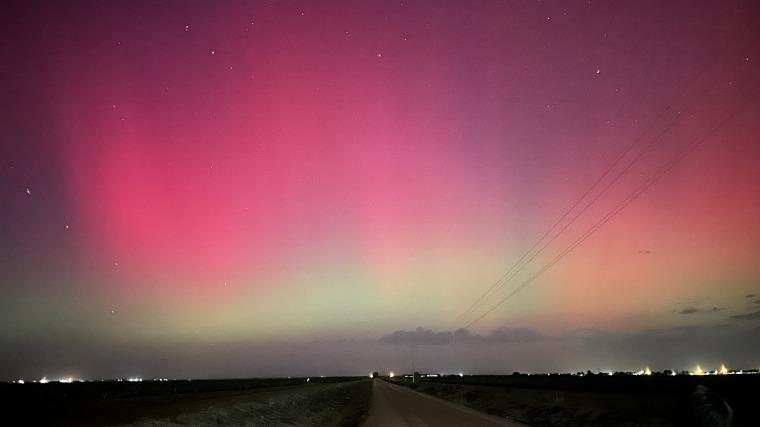Texas Skies to Glow with Rare Aurora Borealis Display
This week, residents across Texas have a rare chance to witness the mesmerizing aurora borealis lighting up the night sky, an event typically confined to northern latitudes near the Arctic Circle. A powerful geomagnetic storm, triggered by heightened solar activity, is expected to disrupt Earth’s magnetic field, pushing the northern lights’ visibility as far south as Austin. This extraordinary natural spectacle offers Texans a unique opportunity to observe one of nature’s most captivating light shows far from its usual polar domain.
Top Viewing Locations in Texas:
- Austin: Areas west of the city with low light pollution promise clear views.
- San Antonio: Early evening hours near the Hill Country provide optimal conditions.
- Amarillo: Its northern position increases the likelihood of vivid aurora sightings.
- El Paso: The dark desert environment offers excellent visibility.
| Viewing Window | Chance of Aurora | Recommended Spot |
|---|---|---|
| 9 PM – 11 PM CST | High | West Austin Hills |
| 10 PM – Midnight CST | Moderate | Outskirts of San Antonio |
| 8 PM – 10 PM MST | High | El Paso Desert |
Skywatchers are encouraged to monitor local weather forecasts and seek out dark, open areas away from urban light pollution to enhance their viewing experience. Although this geomagnetic storm poses no threat to public safety, minor disruptions to electronic devices may occur during peak activity. For many Texans, this event represents a once-in-a-lifetime chance to witness the northern lights in an unexpected setting.
The Science Behind Geomagnetic Storms and Auroras
The aurora borealis is a stunning byproduct of solar activity interacting with Earth’s magnetic environment. When the sun emits a surge of charged particles—often through solar flares or coronal mass ejections—these particles travel through space and collide with Earth’s magnetosphere. This interaction triggers a geomagnetic storm, which energizes atmospheric gases such as oxygen and nitrogen. The collisions excite these gases, causing them to emit light in vibrant hues ranging from bright greens to deep reds, creating the iconic dancing lights in the sky.
Several factors influence the visibility and intensity of the northern lights:
- Strength of the geomagnetic storm: More intense storms produce broader and brighter auroral displays.
- Geographic latitude: Auroras are usually confined to polar regions, but strong storms can extend visibility to mid-latitudes like Texas.
- Weather conditions: Clear, cloudless nights significantly improve chances of spotting the aurora.
- Time of night: Auroral activity typically peaks around midnight local time.
| Storm Intensity | Kp Index | Usual Auroral Range |
|---|---|---|
| Minor | 5 | Polar regions |
| Moderate | 6 | High latitudes; occasional southern sightings |
| Strong | 7-8 | Mid-latitudes, including northern U.S. |
| Severe | 9+ | Rare visibility at low latitudes, such as Texas |
Prime Texas Spots for Aurora Viewing This Weekend
Although Texas is not typically known for aurora sightings, this weekend’s geomagnetic storm creates a rare opportunity for enthusiasts and casual observers alike. To maximize the chance of witnessing the northern lights, it’s best to escape the glow of city lights and head to some of Texas’s darkest natural areas.
The Texas Hill Country is a favored destination, with locations like Enchanted Rock State Natural Area and Pedernales Falls State Park offering expansive western horizons and minimal light pollution. These spots provide ideal conditions for spotting the elusive aurora on the Texas plains. Visitors should come prepared with warm clothing and refreshments to enjoy the spectacle comfortably.
For those in northern or western Texas, Big Bend National Park and Caprock Canyons State Park are excellent choices. These remote parks boast some of the darkest skies in the region, enhancing the visibility of faint auroral glows. Planning your visit around local midnight hours and checking weather forecasts for clear skies will further improve your chances.
- Enchanted Rock: Renowned dark sky reserve in the Hill Country
- Pedernales Falls: Wide-open western views perfect for aurora spotting
- Big Bend National Park: One of the darkest night sky locations in the Southwest
- Caprock Canyons: Minimal light pollution ideal for stargazing
Tips and Safety Guidelines for Aurora Watchers
Experiencing the northern lights in Texas requires thoughtful preparation to ensure both safety and enjoyment. Since nighttime temperatures can drop sharply, layering warm clothing is crucial. Bringing a flashlight with a red filter helps maintain night vision without disturbing others. It’s also important to keep your mobile device fully charged for capturing photos and for emergency communication. If venturing into remote areas, inform someone of your plans and expected return time.
Choose viewing sites away from artificial lights to enhance aurora visibility. Using a camera mounted on a tripod allows for long-exposure shots that capture the full brilliance of the aurora. Avoid standing near power lines or unstable terrain to stay safe. Here’s a quick checklist to prepare for your aurora viewing adventure:
- Warm, layered clothing and sturdy shoes
- Red-light flashlight or headlamp
- Fully charged phone and portable power bank
- Blanket or portable chair for comfort
- Camera with tripod for night photography
- Vehicle with sufficient fuel for travel
Final Thoughts on the Texas Aurora Borealis Event
As this exceptional geomagnetic storm unfolds, Texans have a rare chance to witness the northern lights far from their usual northern habitats. Whether you’re a seasoned skywatcher or a curious newcomer, keeping an eye on clear, dark skies over the next few nights could reward you with a breathtaking natural display. Such events highlight the dynamic interactions between our planet and the sun, connecting Texas to the spectacular cosmic phenomena typically reserved for higher latitudes.




